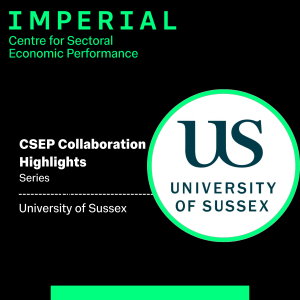 What combination of skills and experiences best defines your journey as an aeronautical engineer?
What combination of skills and experiences best defines your journey as an aeronautical engineer?
I’m an aeronautical engineer — this means I am 10% electrical engineer, 30% mechanical engineer, 10% material scientist, 20% computer scientist, and 10% chemical engineer. And this is definitely one of those cases in which the whole is more than the sum of the parts. I worked as engineer at Airbus for a few years before I started my doctoral research, and I joined Imperial a couple of years after.
What area of study is capturing your attention right now?
The problem that most interests me right now is understanding the impact that a warming atmosphere will have on future aircraft. This is the reverse of what we normally focus on (how aircraft emissions affect the climate, which of course is much more important!) and it is one that may have substantial practical implications as we develop more efficient aircraft. Very high efficiency is strongly linked to smooth operating conditions, and a very turbulent atmosphere will not help at all. The solutions I’m looking into need of advanced flight controls, which means my research now spans all the way from meteorology to embedded systems. I am very lucky to have many collaborators that are true experts on those areas.
What opportunities has CSEP provided for broadening your perspective in your field?
One of my current roles is to act as the director of the Brahmal Institute for Sustainable Aviation. This has been a fantastic opportunity to help shaping the research landscape at Imperial and beyond, and we have around 15 researchers now working on some of the hardest problems to achieve net-zero aviation. The institute challenged me to step outside the narrow confines of my research and explore the broader landscape of the aviation sector. The CSEP brought an opportunity to systematise that effort and look at the portfolio of technologies that have proposed for net-zero aviation from the point of view of their economic value to the UK, the policy bottlenecks that may impede their development, and the research that is still needed to make some of them work at scale.
Do you have a favourite paper, study, book or project that has influenced your career path so far?
The very first visit I made when I started at Imperial was to the site in Farnborough where Airbus was developing a solar-powered aircraft. This is an incredibly difficult problem: the wings need to be very large because the area needed by the solar panels, but there is still very little power coming from them to power the engines, so the aircraft has to be both extremely light and very aerodynamically efficient. The result is off the scales compared to any other aircraft! I tried to address some of those trade-offs with my very first research projects, which let me to develop new design and analysis strategies, which eventually shaped the rest of my academic career.
 What is the primary research theme guiding this collaboration?
What is the primary research theme guiding this collaboration?
 Could you summarise your career journey so far?
Could you summarise your career journey so far?
 Could you share more about your current research projects and highlight the part that you find most engaging or innovative?
Could you share more about your current research projects and highlight the part that you find most engaging or innovative? Can you tell us a bit about your background and how you became involved in the CSEP project on the UK MedTech sector?
Can you tell us a bit about your background and how you became involved in the CSEP project on the UK MedTech sector?
